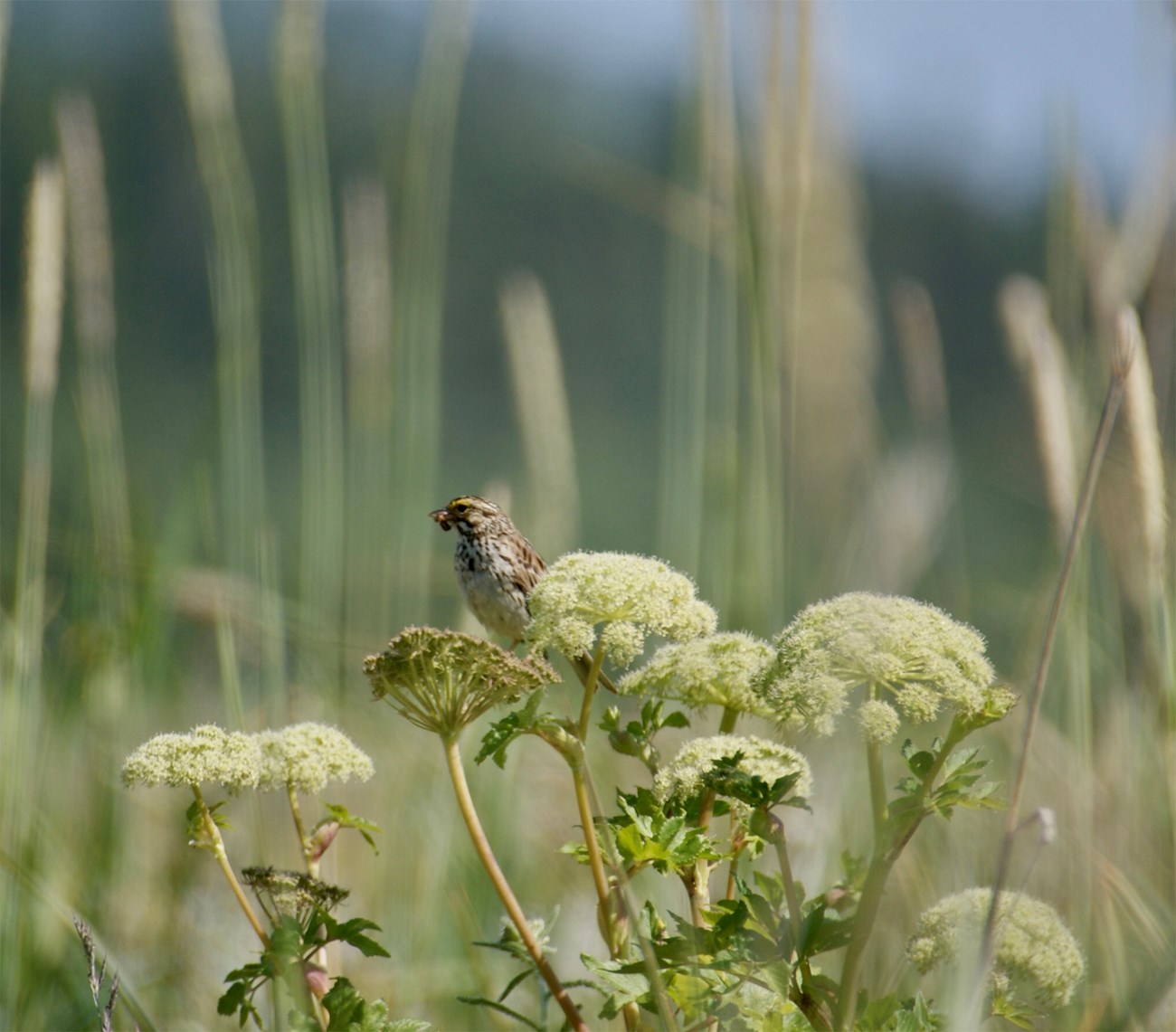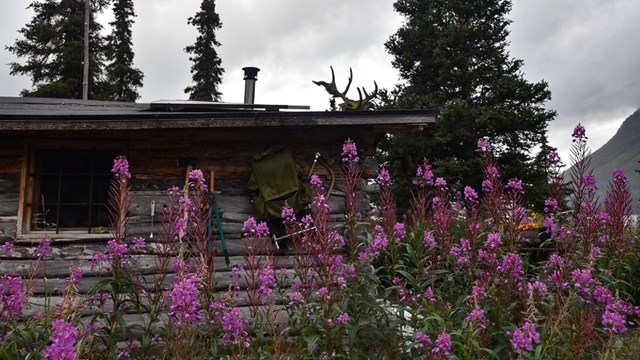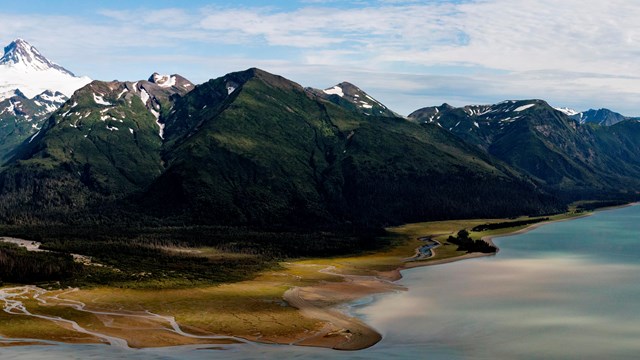Last updated: December 10, 2020
Article
Sedges and Grasses of the Cook Inlet Coast

NPS Photo/A. Jones
Biological Diversity is Key
Lake Clark National Park and Preserve’s coastal areas provide an ecosystem full of nutrient-rich plants that support a biological diversity including Alaska brown bears, other salt marsh mammals, and shorebirds. A coastal brown bear’s diet will shift with seasons. As food sources become available, they are found feeding on sedges, berries, and other herbaceous plants.Sedges
Sedges (Carex spp.) are one of the most diverse groups of plants in Alaska. They are extremely adaptable and can be found in both wet and dry environments. They are a dominant plant in many wetland ecosystems, such as coastal salt marshes, and can play an important role in food webs, nutrient cycles, and providing habitat. Identifying sedges to species can be extremely difficult, especially if a bear gets to them first, as it requires detailed examination of flower and fruit structures. The stem is a good identifier in determining a sedge.Sedges have edges and rushes are round. Grasses are hollow straight to the ground! A sedge stem is triangular and solid, grass stems are generally hollow and round, and rush stems are solid and round.

Plants
Read why Lake Clark area is special for its diversity of flowers, plants, trees, and lichen in a relatively small area.

Subsistence: Plant Harvesting
Harvest more knowledge on traditional uses of local plants.

Coastal Salt Marshes
What makes a salt marsh special? Join NPS scientists from the Southwest Alaska Inventory and Monitoring Network to learn more.
